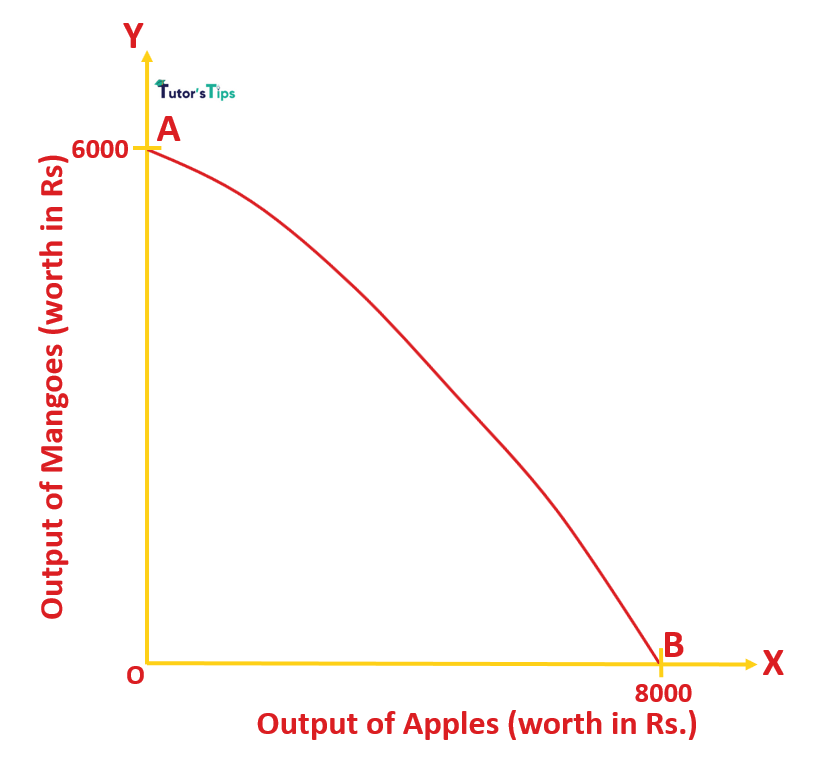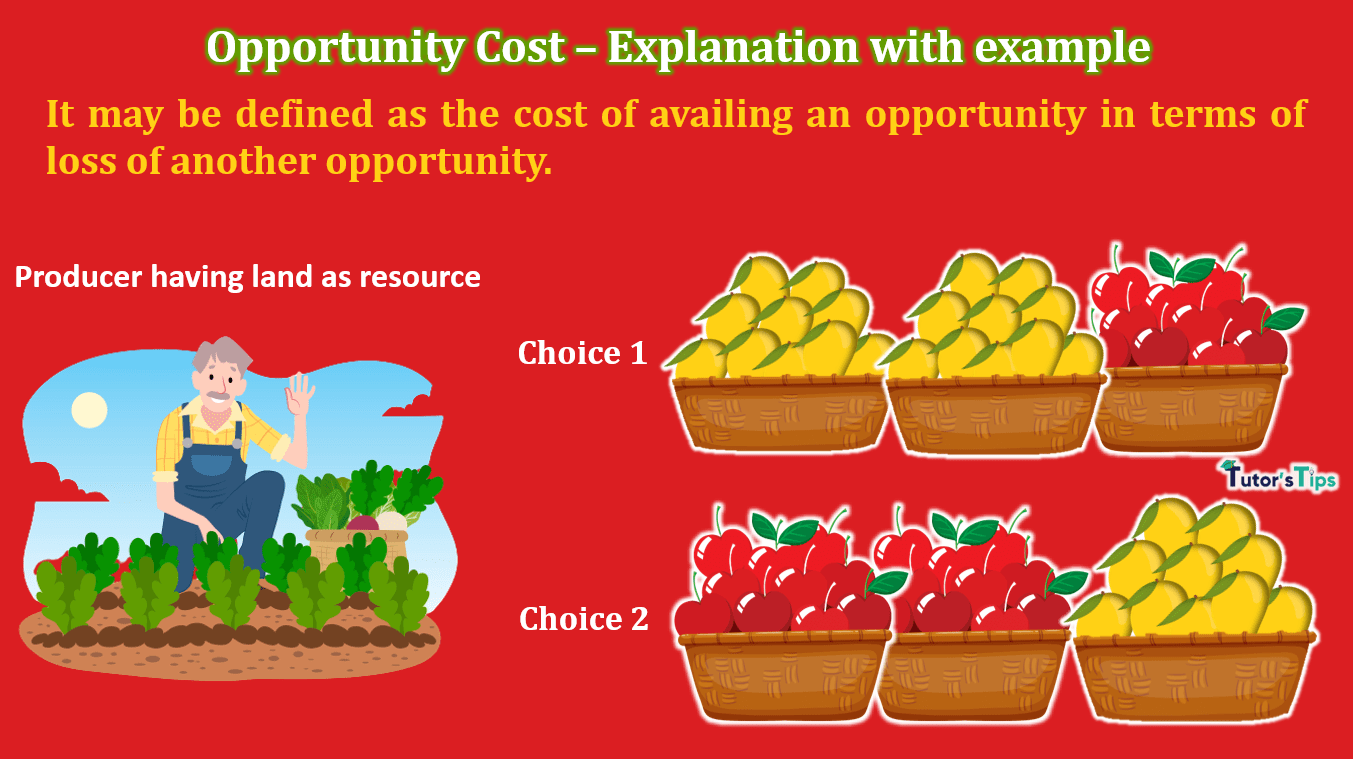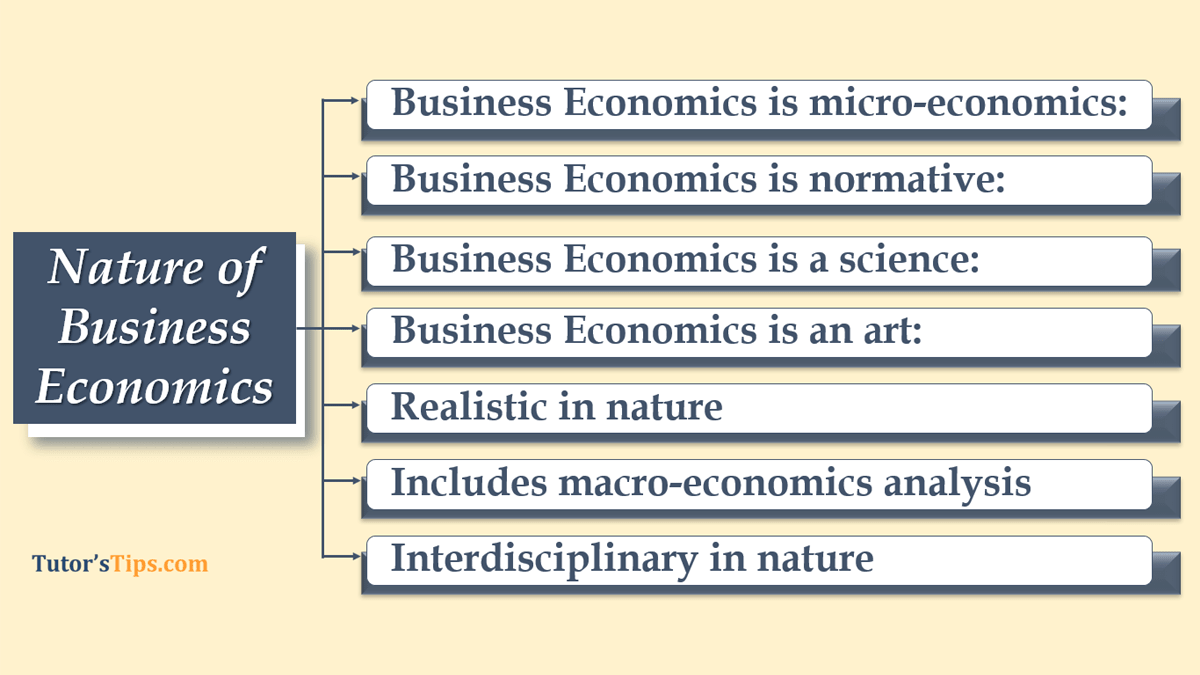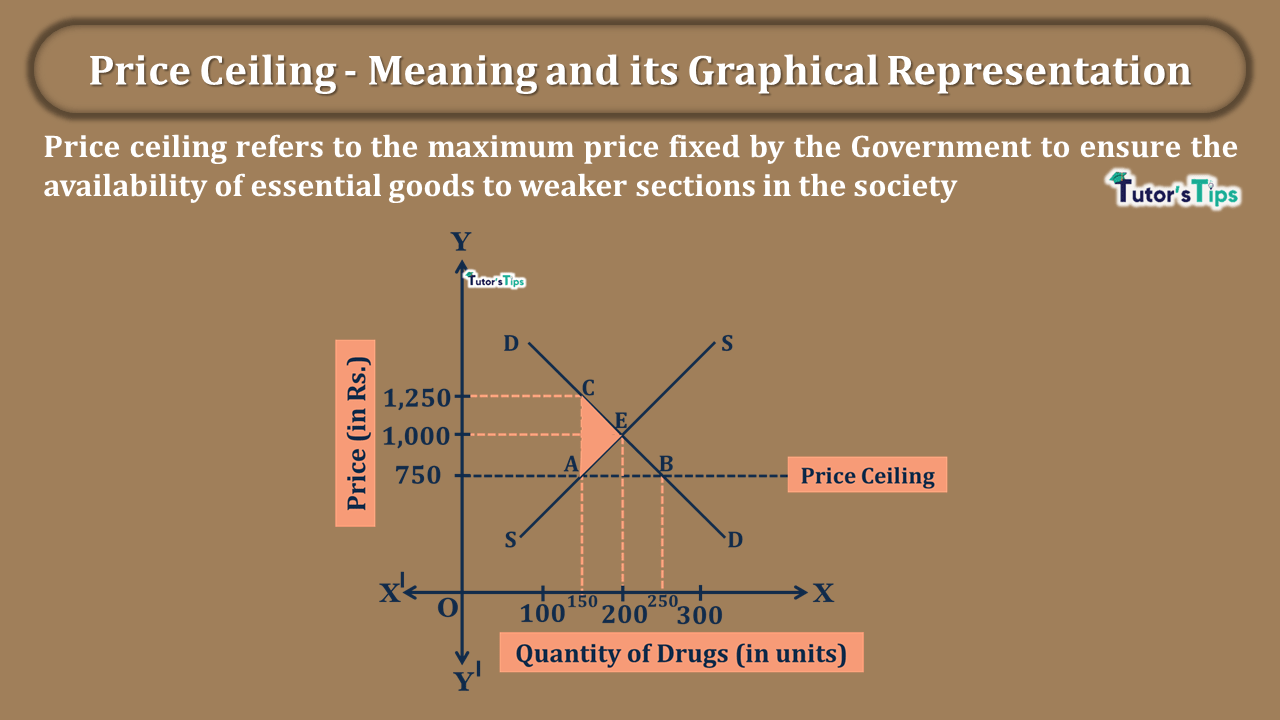The opportunity cost concept is an important concept in economics. The resources we have, carry some alternative uses. When we use a resource in one use in place of others, we have to sacrifice the opportunity to use it in another use. Thus, the Opportunity cost is the value of the next best alternative use sacrificed.
Meaning of Opportunity Cost :
It refers to the cost of shifting of resources from one use to another. In other words, it may be defined as the cost of availing an opportunity in terms of loss of another opportunity.
As we know that resources available for production and economic goods are limited and they have alternative uses. Thus, when we use an economic commodity or resources in one use, then we have to sacrifice the opportunity to use it in another use. Thus, it is the value of the factor in its best alternative use.
In the words of Samuelson,
“Opportunity cost is the value of the next best use (opportunity) for an economic good or resource or the value of the sacrificed alternative.”
Example:
Suppose Mr Shubam has two job offers which include a job in a bank and another in school. The bank provides him with a salary of Rs 15000 per month whereas the school offers him a salary of Rs. 12000 per month. Thus, he will go for the best alternative which is a bank job. As a result of choosing the bank job, he has to sacrifice the salary of Rs. 12000 which he can earn from school. Thus, the opportunity cost for choosing the bank job is the value of the best alternative i.e. Rs12000 sacrificed from school.
Illustration of OC in Production:
Suppose a land of hectares is to be used by a producer for the production of apples. This is the one use of the land. If because of any reason, the producer has to use that land for the production of mangoes. This is another use of that same land. In economics, this use is known as an opportunity. Shifting from the production of apples to mangoes involves the same cost to the producer which is the loss of output of apples.
Subscribe our Youtube Channel
Types:
The opportunity cost can be classified as :
Advertisement-X
- Total Opportunity Cost
- Marginal Opportunity Cost
1.Total Opportunity Cost(TOC):
In production, this cost can be defined as the total loss of output when resources are shifted from one use to another.
For Instance, If the given 10 hectares of land is shifted to the production of apples worth Rs.8000 from mangoes worth Rs.6000. Thus, the total opportunity cost of shifting resources from one opportunity to another is equal to the loss of output of mangoes worth Rs.6000.
This concept can be explained with the help of Production Possibility Curve.

In fig, X-axis shows the cost of mangoes and Y-axis shows the cost of apples produced. It is assumed that the production technique is constant and the resources are fully utilized. In fig, it is shown that with the use of available resources, mangoes worth Rs6000 and apples worth Rs8000 are produced. If the resources are used for the production of apples, then the opportunity cost will be Rs.6000 which is the cost of the best alternative use of land for the production of mangoes.
In short, the total opportunity cost of a resource for use in a given job is the amount it can earn in its next best alternative use.
2. Marginal Opportunity Cost(MOC):
It refers to the sacrificed cost per unit of additional output from another use when resources are shifted from one use to another. This Cost is based on two assumptions:
- The factors of production are constant.
- There is no change in production technology.
In other words, the marginal Opportunity cost of one commodity means the reduction in the production of another commodity, due to usage of constant resources for the production of both.
Therefore,
| Marginal Opportunity Cost | = | ΔLoss of the output of Commodity-1 |
| Δ Gain of the output of Commodity-2 |
Example:
Suppose, a farmer has one acre of land. By changing its production techniques, he produces two commodities -Mangoes worth Rs. 4400 and Apples worth Rs 3200. If he increases the production of apples to worthing Rs 6400 on the same piece of land, then he will reduce the production of mangoes to worth Rs.1800. The worth of mangoes being sacrificed is called the marginal cost of apples.

In fig, X-axis shows the worth of output of apples and Y-axis shows the worth of mangoes. AD is the production possibility curve showing different combinations of apples and mangoes. When the resources are fully utilized, the apples worth Rs 3200 and mangoes worth Rs. 4400 are produced. Here, point B shows the initial production of apples and mangoes on the same land whereas point C shows the increased production of apples and reduced production of mangoes. By increasing the production of apples, the producer is able to produce apples worth Rs.6400. As a result, the production of mangoes decreased to only worth Rs.1800 which would be sacrificed by him.
Advertisement-X
It means, the marginal cost of producing additional apples:
| ΔLoss of the output of Mangoes | = | 4400-1800 | = | 2600 | = | 0.81 |
| ΔGain of the output of Apples | 6400-3200 | 3200 |
0.81 can be said as Slope of Production Possibility Curve. Hence, we can say that marginal opportunity cost is identical to the slope of PPC.
Thanks Please share with your friends
Comment if you have any question.
Check out Business Economics Books @ Amazon.in







Leave a Reply